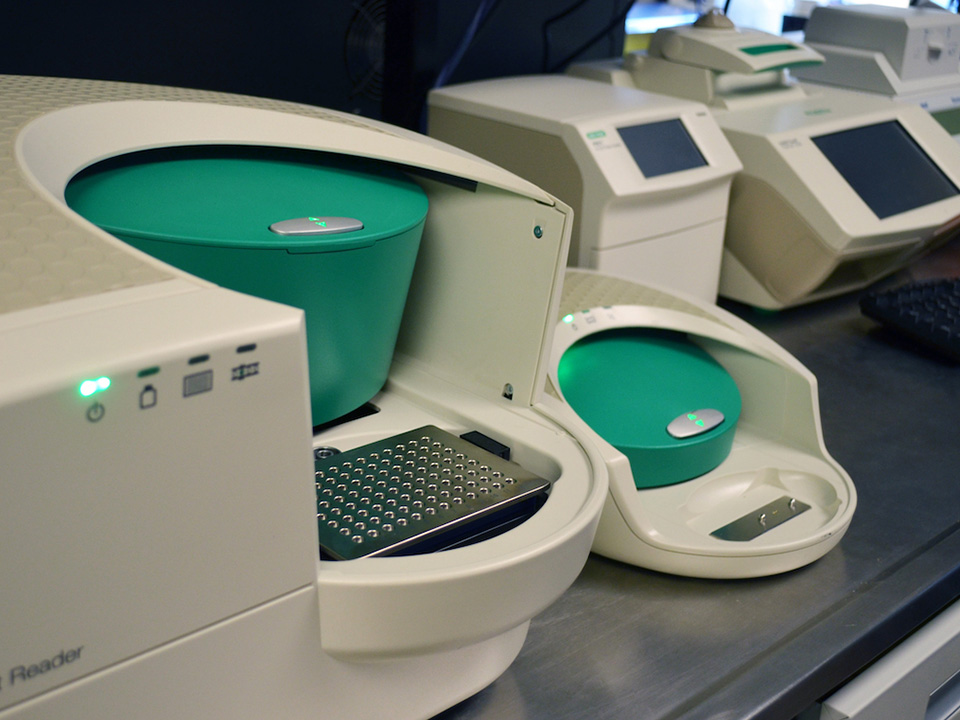Tool Kit: BioRad’s QX200 ddPCR System
By Betty Zou
Droplet digital polymerase chain reaction (ddPCR) offers highly sensitive detection and absolute quantification of target DNA or RNA molecules. BioRad’s QX200 ddPCR system combines water-oil emulsion droplet technology with microfluidics by first partitioning individual ddPCR reactions into 20,000 uniform nanolitre droplets. Following a standard PCR reaction, the droplets are streamed through the droplet reader for fluorescence analysis.
Droplets containing at least one copy of the target molecule will emit a higher fluorescence signal compared to negative droplets. The QuantSoft software applies statistical analyses to generate an absolute quantification of the target molecules. Digital platforms like ddPCR are being used to identify cancer subtypes, optimize drug treatment designs, monitor residual disease and study tumour evolution.
Dr. Arun Seth, a senior scientist in Biological Sciences and director of the genomics facility at Sunnybrook Research Institute (SRI), says the advantage of ddPCR over real-time quantitative PCR is its sensitivity: “ddPCR provides absolute counting of target molecules, whereas the other methods give you relative expression. With ddPCR, you don’t need a standard curve.”
The QX200 system is compatible with both TaqMan hydrolysis probes and EvaGreen dye. While the droplet generator can process up to eight samples at a time, the assays can be scaled up for high-throughput using 96-well plates. By pooling samples, the sensitivity of the QX200 system can be increased to detect target molecules with concentrations as low as one in 1,000,000 copies.
Dr. Yutaka Amemiya is manager of the genomics facility and operates the system. “Most of the projects are cancer-related RNA expression studies,” he says. These include Seth’s research on microRNA biomarkers for prostate cancer and Dr. Wedad Hanna’s studies on detection of copy number amplification of HER2 in breast cancer. Dr. Michael Julius is developing ddPCR-based screening strategies for detecting CRISPR-Cas9 induced mutations in cell lines. The ddPCR platform is also suited for library quantification for next-generation sequencing and analysis of genetic mutations and copy number variations.
The QX200 is also a useful tool in microbiology, where Drs. Samira Mubareka and Andrew Simor are using it to quantify the viral loads of the flu virus and rhinovirus in biological samples.
The QX200 system is worth $100,000 and was purchased with funding from the Canada Foundation for Innovation.






